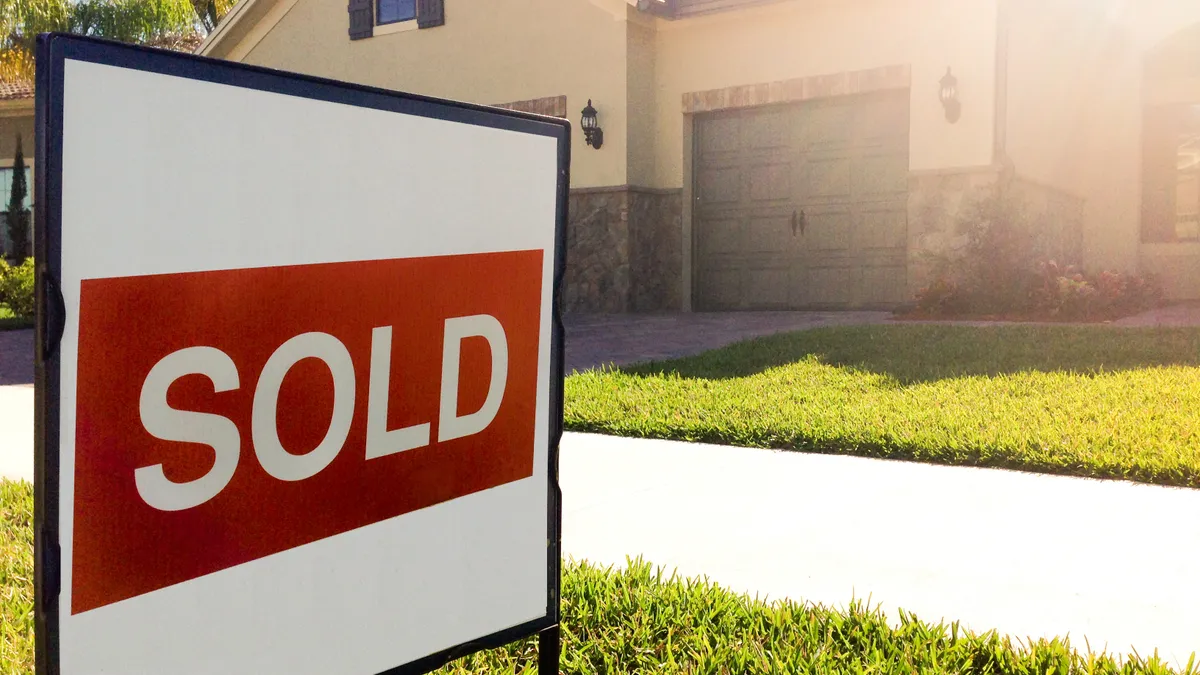Dive Brief:
-
The typical down payment of 20% on the cost of a median-priced home in the U.S. requires more than two-thirds of buyers’ average annual income to qualify and secure competitive terms, according to real estate website Zillow.
-
First-time buyers, in particular, face challenges as they don’t have equity from a previous property while high rents, for those paying them, stymie their savings potential. For those looking to purchase a home, saving for a down payment is their leading concern, Zillow found.
-
The report noted some regional variation, however, with a 20% down payment in large metros like Los Angeles and San Jose, CA, accounting for 182% of buyers’ average annual income compared to smaller markets like Pittsburgh, Indianapolis, and Kansas City, MO, where the same down payment accounts for less than half (48%).
Dive Insight:
Escalating home prices and rents are challenging potential new buyers’ ability to save while mortgage rates have begun to climb from historical lows and are likely to continue to do so.
Combined, these trends have made homeownership less affordable, according to a recent report from Black Knight Financial Services, and is expected to slightly dampen growth in the price-sensitive, first-time buyer segment this year.
That’s posing problematic for builders who are awaiting an uptick in buying activity to increase their production while also facing supply-side headwinds including the labor shortage, which is extending project timelines, often unpredictably.
Meanwhile, the national rate of failed home sales rose to 3.9% in 2016 from 2.1% in 2015 due in part to a growing share of new buyers, who were lacking in equity from a previous purchase and a strong credit history, according to a report last week by residential real estate website Trulia. Starter homes reported the highest rate of failed sales in the latest quarter at 7.1% while the category tied with trade-up homes at 6.3% for the year.
The National Association of Realtors reported in November that first-time buyers accounted for 35% of home sales in 2016, the most since 2013. However, a loosening in inventory conditions at the lower end of the market is needed to spur this group to its pre-recession share of 40%.
For more housing news, sign up for our daily residential construction newsletter.












